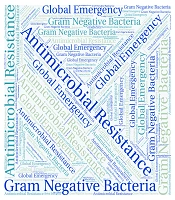Antimicrobial resistance (AMR) is a growing public health problem that affects health, the economy, and human development (1). A 2016 review of AMR predicted that drug-resistant infections will kill 10 million people annually by 2050 and cause a cumulative economic loss of USD 100 trillion if proactive solutions to slow the rise of drug resistance are not implemented. Although some have criticized this forecast, numerous researchers agree that the spread of AMR is an urgent problem that requires a global, coordinated action plan to solve (1, 2).
Recently, a study using statistical predictive models based on a comprehensive systematic review estimated that 4.95 million deaths related to AMR, including 1.27 million deaths attributable to AMR, occurred across 204 countries and territories in 2019. The highest burden of AMR is seen in low-resource settings. Antimicrobial resistance was the third leading underlying cause of death for 2019 in the Institute for Health Metrics and Evaluation’s Global Burden of Disease study (3). Additionally, deaths attributable to AMR surpassed those caused by HIV, tuberculosis, and malaria. Understanding the effects of AMR is crucial for building policy resolutions, particularly regarding antimicrobial and diagnostic stewardship and infection prevention and control programs (3-5).
The incidence of multidrug-resistant organisms (MDROs) increased during the COVID-19 pandemic due to widespread use of antimicrobial drugs and breaches in infection control practices (4).
For gram-negative infections, a meta-analysis showed that lethality was higher in patients with multidrug-resistant infections than those with non-multidrug-resistant infections (4, 6). The meta-analysis demonstrated that septic shock, ICU stay, pneumonia, isolation of multidrug-resistant gram-negative bacteria, inappropriate empirical and definitive treatment, and male sex were more common in patients who died than in those who survived (6). In addition, several studies have reported inappropriate empirical and definitive treatment as independent variables associated with attributable lethality. As the incidence of AMR rises, the likelihood of inappropriate empirical treatment increases. Our meta-analysis revealed that persons who did not receive appropriate empirical treatment had a higher lethality rate than those who did. However, the lack of information regarding the adequacy of antimicrobial therapy in many studies might explain the absence of statistically significant differences between subgroups (4, 6-8).
To sum up, future studies that involve many healthcare centers and adjust for potential confounding variables should be undertaken to address the impact of AMR. Additionally, expanding microbiology laboratory capacity and data collection systems is necessary to improve our understanding of this critical human health threat, which has been proposed as a global emergency by the WHO.
